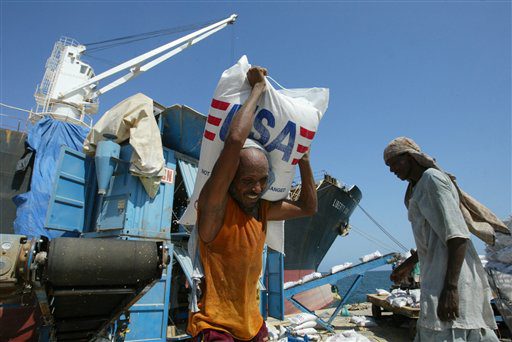
By Charles Abbott
WASHINGTON (Reuters) – The U.S. Senate voted on Monday to make only a minor change in the main U.S. global food aid program, rebuffing President Barack Obama’s call for the biggest reform of the hunger relief program since the Cold War.
Senators agreed in a voice vote to allocate only $60 million a year for the purchase of food aid under the Food for Peace program in or near the country for which it is destined.
This was an increase of only $20 million in a program that spends roughly $1.4 billion a year to purchase and ship American-grown food thousands of miles to hunger spots.
“It would modestly increase the authorization for local and regional purchase,” Agriculture Committee chairwoman Debbie Stabenow, a Michigan Democrat, said in a debate that lasted less than two minutes.
No other food-aid reform amendments are expected to be offered in the U.S. farm bill currently under debate.
The United States is the world’s largest food aid donor. The administration proposed in April that up to 45 percent of funding for the Food for Peace program should be available for use as food vouchers or to buy food locally, saying this would allow up to 10 percent more people to be helped at lower cost.
A pilot program in the 2008 farm law showed local purchase can speed delivery of food aid, according to a Cornell University study. It also said local purchases could halve the cost of grain, although processed foods sometimes cost more locally.
The international development group Oxfam said the additional $20 million was a small step to “bring our food aid programs into the 21st century,” but that greater reform was desperately needed.
Food aid groups are split on local purchase. Oxfam, CARE, Save the Children and American Jewish World Service support it, while opponents include World Vision, Planet Aid and International Relief and Development.
It is also opposed by farm-state lawmakers, maritime groups and food processors. A Senate staff worker said there were also doubts among lawmakers as to whether the State Department can handle the chore of large-scale food purchases overseas.
Food for Peace has operated solely on donation of American food ever since it was created in 1954 and by law, at least half the aid must travel on U.S.-flagged vessels.
Under the White House plan, funding would be diverted to State Department accounts for disaster relief, local food projects and emergency food aid.
Ethiopia, Sudan, Kenya and Pakistan were among the largest recipients of U.S. food aid last year. Such aid typically includes rice, vegetable oil, lentils, dry beans, a corn-soy blend, bulgur and dried peas. (Reporting by Charles Abbott, editing by Ros Krasny and David Brunnstrom)
(c) 2013 Thomson Reuters, Click For Restrictions

 Join The Club
Join The Club











